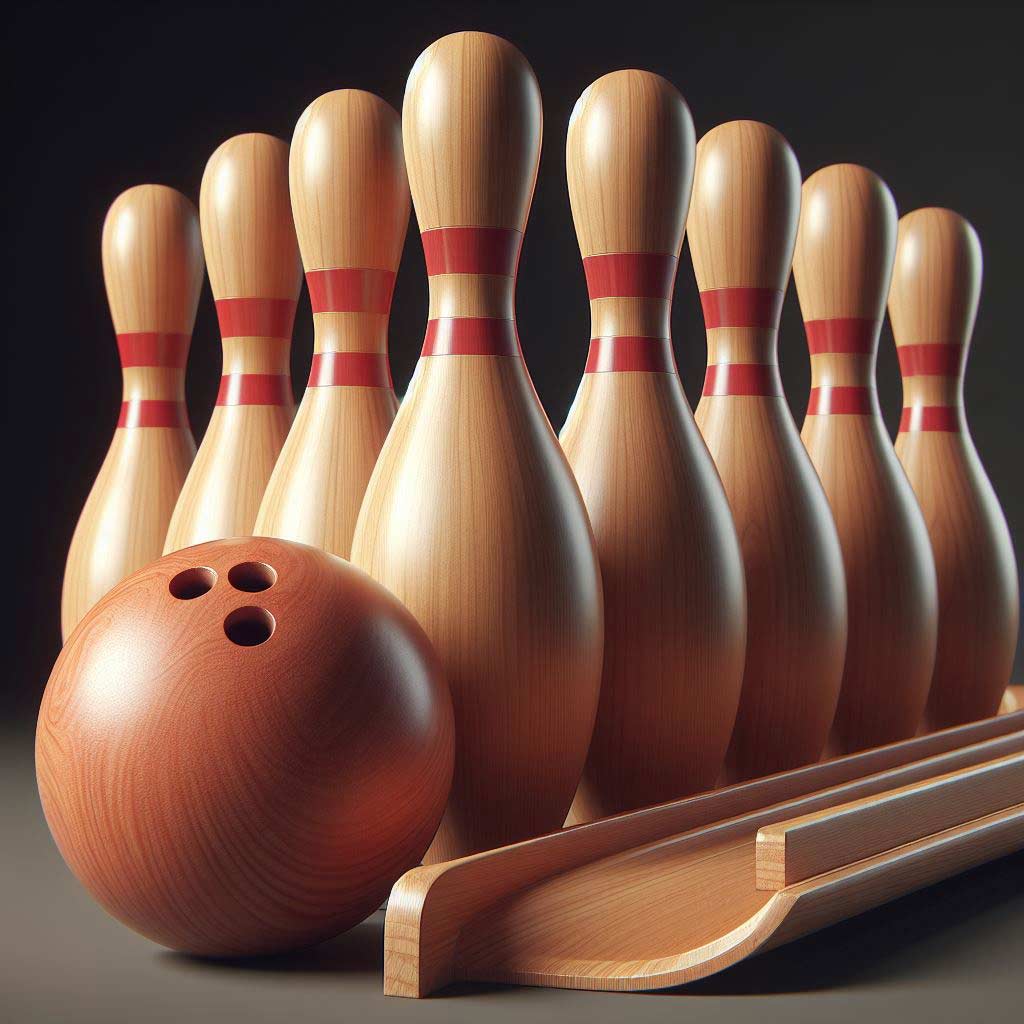Bowling, in its various forms, has long been a beloved pastime around the world. From the classic 10 pin layout to more unique variants, the satisfying thrill of knocking down pins with a well-aimed ball has captivated generations of enthusiasts. However, amidst the popularity of standard 10 pin bowling, there exists another intriguing version of the game – 9 pin bowling.
With its distinct gameplay and cultural traditions, 9 pin bowling has maintained a dedicated following, particularly in certain regions. But have you ever wondered who was the trailblazer that first dreamed up this unique bowling format? In this comprehensive article, we’ll delve into the origins of 9 pin bowling, uncovering the fascinating story of its invention and the key figures behind it.
Who Invented 9 Pin Bowling?
The exact origins of 9 pin bowling can be traced back to the early 1800s in Germany. While the specific inventor remains a point of debate, historians have identified several key figures and events that contributed to the development of this bowling variant.
One of the earliest known references to 9 pin bowling comes from the German town of Bouwinghausen, where a form of the game called “Kegeln” was played as early as 1810.
In this primitive version, players would roll a ball down a lane to knock over a triangular arrangement of nine wooden pins. The game quickly gained popularity among the local community, becoming a beloved pastime.
As the 19th century progressed, 9 pin bowling began to spread beyond its German roots. In 1840, German immigrants brought the game to the United States, where it found a particularly enthusiastic following in the Northeast region.
The game’s simple rules and social aspect made it an instant hit, and soon 9 pin bowling alleys were popping up across cities like New York and Philadelphia.
While the exact inventor remains unknown, historians point to several key figures who played a role in the game’s evolution and popularization.
One such individual was a German immigrant named Joseph Thum, who is credited with helping to standardize the rules and equipment of 9 pin bowling in the United States during the mid-1800s.
Thum, who had experience with the Kegeln game in his native Germany, opened one of the first dedicated 9 pin bowling alleys in New York City in the 1850s.
He worked tirelessly to establish consistent regulations, such as the size and placement of the pins, the weight and dimensions of the bowling balls, and the dimensions of the bowling lanes. Thum’s efforts helped to codify the rules of 9 pin bowling, making it more accessible and appealing to a wider audience.
Another influential figure in the history of 9 pin bowling was Charles Duryea, an American inventor and engineer. In the late 1800s, Duryea patented several innovative bowling technologies, including a mechanical pin-setting device that revolutionized the game.
This automation allowed for quicker and more efficient resetting of the pins, making 9 pin bowling matches more streamlined and enjoyable for players.
Duryea’s inventions, coupled with Thum’s standardization efforts, helped to solidify 9 pin bowling as a popular pastime in the late 19th and early 20th centuries.
The game continued to spread throughout the Northeast, with regional variations and tournaments emerging in areas like Connecticut, New York, and Pennsylvania.
The Evolution of 9 Pin Bowling
As 9 pin bowling gained momentum, the game continued to evolve and adapt to the changing times. While the core gameplay remained relatively consistent, with players rolling a ball down a lane to knock over a triangular arrangement of nine pins, various modifications and advancements occurred over the decades.
One notable development was the introduction of specialized 9 pin bowling equipment. In the early days, the pins and balls used in the game were often homemade or repurposed from other activities.
However, as the sport grew in popularity, manufacturers began producing dedicated 9 pin bowling equipment, including custom-designed pins, balls, and even automated scoring systems.
These technological advancements not only improved the gameplay experience but also helped to standardize the sport across different regions. Bowlers could now rely on consistent equipment, ensuring fairness and allowing for more accurate comparisons of scores and performance.
Another key evolution in 9 pin bowling was the establishment of formal leagues and tournaments. As the game gained a dedicated following, organizers began to create structured competitive frameworks, with players forming teams and competing against one another in local, regional, and even national events.
These organized competitions helped to further popularize 9 pin bowling, attracting new players and fostering a sense of community among enthusiasts.
The competitive aspect also led to the development of specialized techniques and strategies, as bowlers sought to hone their skills and gain an edge over their opponents.
One notable example of a pioneering 9 pin bowling tournament is the Connecticut 9 Pin Tournament, which has been held annually since 1933.
This prestigious event, which attracts top players from across the state, has become a centerpiece of 9 pin bowling culture in the region, showcasing the game’s enduring appeal and the skill of its dedicated practitioners.
The Differences Between 9 Pin and 10 Pin Bowling
While 9 pin and 10 pin bowling share some fundamental similarities, there are several key differences that set them apart as distinct variants of the sport.
The most obvious difference lies in the number of pins used. In 10 pin bowling, players aim to knock down all ten pins arranged in a rectangular formation, while in 9 pin bowling, the goal is to topple the nine pins arranged in a triangular pattern.
This numerical distinction also leads to variations in the scoring system. In 10 pin bowling, a perfect game is achieved by knocking down all 10 pins in each frame, resulting in a score of 300. In 9 pin bowling, the maximum score per frame is 9, with a perfect game totaling 270 points.
Another key difference lies in the equipment used. 9 pin bowling typically employs smaller, lighter balls compared to the heavier, larger balls used in 10 pin bowling.
The pins themselves are also generally shorter and more closely spaced in 9 pin bowling, requiring a different approach and technique from players.
Gameplay-wise, 9 pin bowling often places a greater emphasis on accuracy and precision, as the narrower arrangement of pins demands a more targeted delivery from the bowler. In contrast, 10 pin bowling tends to reward power and ball speed, with players often aiming to knock down the pins with a more forceful delivery.
The cultural and regional differences between the two bowling variants are also noteworthy. While 10 pin bowling has become the dominant form of the sport globally, 9 pin bowling has remained particularly popular in certain regions, especially in the Northeastern United States and parts of Germany.
This regional prevalence can be attributed to factors such as historical traditions, community-based tournaments, and the unique social aspects associated with 9 pin bowling. In these areas, the game has become ingrained in the local culture, with passionate enthusiasts passing down the tradition from generation to generation.
The Enduring Appeal of 9 Pin Bowling
Despite the widespread popularity of 10 pin bowling, 9 pin bowling has managed to maintain a dedicated following throughout the decades. This enduring appeal can be attributed to several key factors, both cultural and practical.
One of the primary draws of 9 pin bowling is the sense of community and tradition that surrounds the sport. In regions where it has a strong presence, 9 pin bowling is often deeply rooted in local culture, with family-owned alleys, community-based tournaments, and time-honored rituals that have been passed down for generations.
This sense of community and shared heritage has helped to foster a deep appreciation and loyalty among 9 pin bowling enthusiasts. The game becomes not just a recreational activity, but a cherished part of their local identity and way of life.
Another factor contributing to the longevity of 9 pin bowling is its relatively simple and accessible gameplay. Compared to the more complex and physically demanding 10 pin bowling, 9 pin bowling is often seen as a more approachable and inclusive sport, suitable for players of all ages and skill levels.
The smaller balls, narrower lanes, and triangular pin arrangement of 9 pin bowling can make it easier for beginners to get started and experience the thrill of knocking down pins. This accessibility has helped to maintain the game’s appeal, particularly in communities where it has become a beloved social activity.
Furthermore, the unique competitive aspect of 9 pin bowling has also contributed to its enduring popularity. The regional tournaments and leagues that have emerged around the sport have created a sense of friendly rivalry and camaraderie among players, who take great pride in representing their local communities.
These competitive events not only showcase the skills of top-tier 9 pin bowlers but also provide opportunities for casual players to participate and experience the excitement of the sport. This balance of competitive spirit and social enjoyment has helped to sustain the game’s popularity over the years.
Looking to the future, there are indications that 9 pin bowling may be experiencing a resurgence in interest, particularly among younger generations. As people seek out unique and authentic experiences, the cultural traditions and community-driven nature of 9 pin bowling have begun to appeal to a new demographic of players.
This potential resurgence, coupled with the sport’s ability to adapt and evolve with the times, suggests that the legacy of 9 pin bowling may continue to endure for years to come.
As the game’s passionate devotees pass on their love and knowledge to future generations, the story of 9 pin bowling’s origins and its enduring appeal is sure to captivate and inspire bowlers around the world.
Conclusion
The story of 9 pin bowling is one of innovation, community, and the enduring power of a beloved pastime. From its humble beginnings in 19th century Germany to its widespread popularity in the United States, this unique variant of the bowling sport has captured the hearts and imaginations of generations of enthusiasts.
Through the efforts of pioneering figures like Joseph Thum and Charles Duryea, 9 pin bowling evolved, becoming a more organized and accessible game.
And in the regions where it has taken root, the sport has become deeply intertwined with local culture, fostering a sense of community and shared heritage.
Today, as 10 pin bowling continues to dominate the global bowling landscape, 9 pin bowling remains a cherished tradition, beloved by its dedicated followers.
Its unique gameplay, social aspects, and regional traditions have all contributed to its enduring appeal, ensuring that the story of 9 pin bowling will continue to be written for years to come.
So, the next time you have the opportunity to experience the thrill of 9 pin bowling, embrace the opportunity to immerse yourself in a rich and fascinating piece of sports history. Who knows – you might just discover a new passion that will stay with you for a lifetime.





